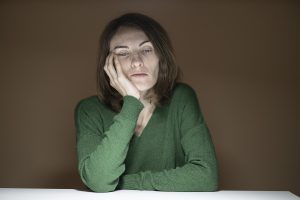I confess.
 I have sat through webinars while painting my nails, tidying my desk and chatting on WhatsApp. I pay more attention when I am on camera. I feel its rude not to look engaged, but I am still distracted by other people moving around at their desks – and the ones who type on the laptop they are using for the video conference. Those giant fingers moving right in front of the camera……
I have sat through webinars while painting my nails, tidying my desk and chatting on WhatsApp. I pay more attention when I am on camera. I feel its rude not to look engaged, but I am still distracted by other people moving around at their desks – and the ones who type on the laptop they are using for the video conference. Those giant fingers moving right in front of the camera……
Online meetings both encourage passivity and demand more focus. This National Geographic article on Zoom fatigue elegantly explains the psychology behind it.
So I worry when people say ‘we’ll move the training online – we already have the slide decks’. And indeed recently I have sat through: agonisingly long presenter introductions, non-stop reading of bullet points, badly formatted slides, presenters’ phones ringing halfway through…
To be fair, there have been some brilliant, engaging sessions too. Sessions in which I knew I would be called on to contribute, whether through answering questions in video or in the chat. Where I was engaged by the storytelling and then could watch the thinking evolve on a whiteboard. OK, there were fewer slides, but my curiosity was sparked to do the reading afterwards.
For years, face to face (F2F) training has been my preference. I train qualitative market research interviewing skills, focus groups and workshops. There is a lot I need to see and hear from my students to know they are understanding and applying the concepts and skills. Typically, I have a whole training day to deliver some theory, practice and feedback. Working online, I have learnt that its much better to do smaller amounts, over a longer period of time, using both synchronous and asynchronous platforms.
Key Suggestion – chunk your training into sessions that meet different purposes
- Make up for lack of F2F rapport by meeting with participants in an online setting first. Use pre-reading or videos to engage learners with the basic concepts.
- Adapt your slide decks to be shorter, more focused, and interactive.
- Use separate sessions for exercises, followed by meetings or webinars.
- You will stretch out the delivery period but increase the effectiveness of the training. Each step in your program can focus on one of the learning tasks in Bloom’s taxonomy. (It works from the bottom up)
Redesign your Training Plan into smaller chunks
Thinking of the training as a process with various stages, (still all online) will massively boost training effectiveness.
Start with an online meeting to get to know your learners, clarify objectives and set pre-tasks
When training F2F, the first time you meet your actual learners can often be on the day itself. You will have been briefed about what they need, and you know you can adjust the delivery during the day, based on their feedback.
Its SO easy to do better than that by having an online meeting with the learners before the training delivery starts. (This is ideally done in groups of 8-10, so you may need more than one. You can later use these as ‘breakout groups’ or mentoring groups or teams to work together). This helps to
- Find out what experience they have
- Get examples of situations where the knowledge from the training would be useful
- What standards are they aiming for?
- Formal or informal self-assessment on knowledge or skills
- How will they know if the training has been useful?
- Share with them the learning objectives
The meeting is set up so the learners spend time talking about themselves, bonding with each other and feeling they will be listened to. They don’t realise how much the trainer is learning about how to teach them, what the priorities are and what examples to use. AND – at the end of the meeting you set a small task that gets them into your content. It could be: summarise an article, watch a video, start a reflective blog, evaluate themselves on a list of skills – let them enter your first webinar with a learning mindset.
Then have a webinar/meeting to deliver key concepts and frameworks that they need to learn further
You probably can use some of your original slide deck. Webinars are usually 45-60 minutes, so allow time to interact with your learners at intervals. It’s worth spending time on an introductory task and making use of the engagement tools that platforms offer to check your learners are still with you – showing videos, quizzes; stopping to pose a question in the chat, playing Lingo Bingo. Do a demonstration. Get them to critique something. Make them active listeners, not passive recipients.
In place of the exercises you would normally do, set a learning development task
These could include group or work in pairs, role play or simulation, case studies, real world practice.
You can use the breakout room feature in Zoom if time and logistics are limited or set a task that requires learners to meet online at another time or work asynchronously. Be available to help if needed.
You need to set a deadline and be able to see evidence of their work – the plan they created, a presentation of their ideas, videos of any interviews conducted, feedback from mentors – find a way of ensuring a visible result of their work. Check in with them occasionally to see how they are progressing. Depending on numbers, they can feedback as teams, small groups or individuals.
This allows participants to learn from and support each other, in a more practical and realistic situation. It also shows them what else they need to learn.
Second Webinar/meeting to follow up, or follow on, from the group work
This replicates the common structure of a training day plan: learn, practice, learn some more, and can lead into practice again. Start with feedback from their task, if you haven’t already done it, as long as it does not make the session too long.
Optionally, a second exercise or development task
This depends on the need and time available, and also needs space for some feedback or reflection.
Very interactive final webinar /meeting to summarise the learning / get training feedback
This is about retention, action planning, focusing on how the training will be put into practice – and might include suggestions for further reading or development. This session needs to be very interactive, with the participants taking more time than the trainer. It might also include a training evaluation, or this might be a later focus group, meeting, or survey – if its some time before the training might be applied.
How does it work in practice?
I worked with a small marketing agency, whose people had varied backgrounds and experience. They did their own telephone interviews and focus groups in a specialised field, and had mostly learnt by watching their senior consultants. They wanted to upgrade their interviewing and focus group skills. (Some details have been changed to protect the innocent).
The first online meeting was via video conferencing. They shared some old projects and discussed what they would be expected to do after the training. The discussion revealed a lack of understanding of the qualitative approach (from using ‘qualitative online surveys’). They put percentages in qual reports; reported most findings as ‘insights’, mixed participants of different status in focus groups and then complained they were hard to manage.
Some pre-reading about the status and validity of qualitative research and an exercise that allowed them to create their own definition of an insight (reviewing Umar Ghumman’s summary of 40 plus definitions from planning and marketing agencies), removed the need to spend time in the following webinar on setting up the basics. I covered the usual – avoiding bias, interviewing skills, building research relationships, and set an interviewing skills task to follow.
They duly interviewed, observed and gave feedback to each other, realising its a skill to come up with creative, relevant and unbiased questions.
The second webinar started with a helpful list of questions and probes that they now knew they needed! The rest of the time was used in covering topic guides, managing groups and using stimulus. They had notes on the details, so I could concentrate on the principles. I used the structure of the training itself to get them to notice how groups change and develop. They knew I would be asking if they had noticed what techniques I was using and why, so they stayed alert.
The second exercise was an online focus group, again using video, with the participants taking turns to moderate. The case study was mocked up to parallel the type of work they did. They were tasked to try new techniques more appropriate for the research issues than the ones they normally used. I was able to send each moderator feedback on their section by reviewing the video.
The final webinar reviewed their learning from this stage, and covered more material about stimulus, projectives, and analysis. It was all fairly top level, with the participants being directed to other resources to look up anything they were particularly interested in. They then reflected on the teaching methods and what could have been better.
Verdict
It was more work for me and they put in more hours than a 7 hour F2F training day, over a period of four days. It worked well with a group of 8; I could have handled 2 or 3 groups simultaneously, although I wouldn’t normally train 24 people in one go unless it was for workshops. My biggest mistake was probably underestimating the costing. I missed the sense of emotional contagion – feeling with them both the anxiety and the relief that comes at various stages of the learning process.
Feedback at the end was very similar to that I would have had from face to face training. Ironically they will now be doing all their qualitative research online anyway.




Leave a Reply